-

人教版新目标初中英语八年级下册Why don’t you get her a scarf教案
教师带领学生复习有关描述宠物的词汇,采用教师提问学生回答的方进行。如:T:What animals do you think would be good pets?What animals do you think would be bad pets?What do you think are good animals for a six-year-old child?然后学生进行 pairwork 练习。Task two: 师生互动,学习探究 1、播放3a部分的录音,引导学生一边听录音,一边跟读。2、通过听录音学生回答以下问题:Why do you think pot-bellied pigs are popular?What are the advantages and disadvantages of keeping such a pet?教师对学生的回答进行及时点评。3.学习范文,学习重点短语,为下步的模仿写作提供语言素材。T :1. )Have you ever kept a pig as a pet?Do you like pigs? St.:No.…Why don’t you like to keep a pig? St: No.They’re too dirty and lazy(Do you know in some foreign countries like Hollyland, Australia,pigs are the most popular pet.there’s a kind of pig.(图)it has an interesting name? it ‘s called a pot-bellied pig.) Now,let’s learn an article about this kind of interesting pet.2.)play the tapeSt.:Listen and repeat3.)show some Qs on computer(本子St.: read silently,then answerthe Qs(本子)4.)Ask ss. Close book and retell this passage.(what is a pot-bellied pig? Is it a good or bad pet? ) St.: retell it to each other“A pot –bellied pig is a popular pet now…”5.read the article together.St.:.practice reading

人教版新目标初中英语八年级下册Would you mind turning down the music教案
Step 4. Group work (4)1. Ask a pair of students to read the dialogue. Say, This activity provides speaking, listening and writing practice using the target language.2. Ask students to complete the work in groups.3. Check the answers with the whole class. 4. Explain some of the language points. Step 5. Word review (Self check 1)1. Ask students to read the words and the phrases given. 2. Fill in the blanks with proper forms of these words to complete the sentences. 3. Check the answers with the whole class. Homework:Do activity 2 on page 57 after class. Period 6Teaching aims: 1. Teach vocabulary words and the useful expressions. 2. Enable the students to learn etiquette in different culture. 3. Help the students learn how to behave politely in public places and in daily life. Teaching procedures:Step 1. RevisionHelp students to review the function of making requests through a free talk. Then lead them to the topic of etiquette. Explain the meaning of etiquette. Or, ask students to look it up in the dictionary. Step 2. Pre-reading (Section 1)1. Ask students to read the picture and make a list with their partner about how many rules of etiquette can be seen being broken.

人教版新目标初中英语九年级下册By the time I got outside, the bus had already left教案
Ⅰ. Teaching Aims and Demands1. Knowledge Objects(1) Key Vocabularyoversleep(2) Target LanguageWhat happened?I overslept. And by the time I got up, my brother had already gotten in the shower.2. Ability Objects(1) Teach the students to use the new words.(2) Train the students to narrate past events with the Past Perfect Tense.(3) Train the students' listening and speaking skills with the target language.3. Moral ObjectIt’s a good habit to go to bed early in the evening and get up early in the morning. So you’ll never be in a hurry in the morning.Ⅱ. Teaching Key Points1. Key Vocabularyoversleep2. Target LanguageNarrate past events with the Past Perfect TenseⅢ. Teaching Difficult Points1. Train the students to narrate past events with the Past Perfect Tense.2. Train the students to understand the target language in spoken conversation.Ⅳ. Teaching Methods1. Thinking of examples from the students' real lives.2. Making sentences by looking at the pictures.Ⅴ. Teaching AidA tape recorderⅥ. Teaching ProceduresStep I Revision1. Revise the language points in Unit 8.Ask some questions like this: What volunteer work would you like to do?Help the students to answer, I’d like to…/I love to…/I hope to2. Practice the dialogue in Activity 3c on page 62 again. Get students to role play the similar dialogues with the following.

人教版新目标初中英语九年级下册Rainy days make me sad教案
1. 教材分析本单元以how do things affect you?为话题, 从颜色、天气、音乐、广告、产品等方面谈论了外界事物如何影响人的心情。要求学生掌握表达某物或某事给人带来的感觉、看法或影响等。共设计了四个部分的内容:Section A 该部分有4个模块:第一模块围绕Which restaurant would you like to go to?这一话题展开思维(1a)、听力(1b)、口语(1c)训练;第二模块围绕How does music affect you? 进行听力(2a-2b)、口语训练(2c);第三模块继续围绕how do colors in the restaurant affect you这一话题展开训练,训练形式为阅读和问题体验(3a)和小组活动(3b);第四模块仍就How do things affect you这一话题以调查的形式展开讨论。Section B该部分有4个模块:第一模块围绕产品广告对人们的影响这一话题以“配对”(1a)与“列举”(1b)两种形式展开训练;第二模块继续围绕How do things affect you? 进行听力(2a-2b)、口语对话训练(2c);第三模块围绕“Advertising”这一话题展开阅读(3a-3b)和写作(3c)训练;第四模块围绕How posters affect you这一话题以口语训练形式展开小组活动。

人教版新目标初中英语九年级下册Could you please tell me where the restrooms are教案
Step Ⅰ RevisionCheck homework. Ask a few students to read the article in 3a.Then ask a few students to read their guides.Step Ⅱ Part 1Look at the words in the box. Ask a student to read them. Make sure the students understand the meaning of the words. You are to fill in the blanks with the words. In some cases, students may need to use another form of the word, for example adjusting for tense or subject/ verb agreement.Ask students to fill in the blanks on their own.Check the answers. Step ⅢPart 2Go through the instructions with the class.Look at the example with the students.Ask students what the answer would be.Ask a student to read the question and answer it.Excuse me, could you tell me where the bank is, please?The bank is across the street from the shopping malt.Get students to complete the work in pairs.Check the answers. Ask a few students to read their questions.Step Ⅳ Just for Fun!Ask all the students to read the conversation. Ask: What is funny about this cartoon? Help students to explain. A Martian is a person from the planet Mars.There is no such thing as Martian food on Earth, and the clerk looks silly because he is trying to think of where there is a Martian restaurant.Invite some pairs of students to present this conversation to the rest of the class.Step Ⅴ Summary and HomeworkIn this class, we’ve done much writing practice using the key vocabulary words and the target language presented in this unit. After class, please finish the questions in 2 in your exercise books. Then finish the exercises on pages 47~48 of the workbook as well.The Seventh Period Ⅰ Teaching Aims and Demands1. Knowledge Objects(1) Key Vocabularyimage, adventure, jealousy, hero, crime, journey, brave, no longer, show interest in, take it easy, become interested in, plain looks(2)Text:Grown-ups like cartoons, too.2. Ability Objects(1) Fast-reading to get a general idea of the text.(2) Careful-reading to get the detailed information in the text.

人教版新目标初中英语九年级下册I’ll help clean up the city parks教案
Talk about offering help (P60)I’ll help clean up the city parks.A: I’d like to work ...B: You could help ...Talk about ways to tell people about the Clean-Up Day (P61)We need to ...We can’t ...I’ll ...Talk about the work the volunteers do (P62)These three students all volunteer their time to help other people.Somebody loves to ... / helps ... / plans to ... / wants to ...A: What do you like doing?B: I like ... A: What kind of volunteer work do you think I could do?B: You could ...1. 重点词汇advertisement, fix, repair, pleasure, blind, deaf, shut, carry, specially, fetch2. 认读词汇hunger, homeless, cheer, clean-up, sign, establish, major, commitment, elementary, veterinarian, coach, similar, call-in, strategy, disabled, organization, unable, support, appreciate, donation, part of speech, pronoun, adverb, preposition, conjunction, donate, Jimmy, Sally3. 词组clean up, cheer up, give out, put off, set up, think up, take after, fix up, give away, put up, hand out, work out, at once

人教版新目标初中英语九年级下册We’re trying to save the manatees教案2篇
本单元主要围绕着有关濒临灭绝的动物这一话题,学习了应该怎样保护我们的环境,以及就某一问题展开辩论。目标提示语言目标能够运用所学知识,就某一问题展开辩论。认知目标1、复习一些语法:现在进行时、一般现在时、用used to 表示一般过去时、现在完成时、一般过去时的被动语态。2、学会表达同意和不同意。3、学会以下基本句型:We’re trying to save the manatees.Manatees eat about 100 pounds of food a day.There used to be a lot of manatees.In 1972,it was discovered that they were endangered.Some of the swamps have become polluted.情感目标了解一些濒临灭绝的动物的生活习性和濒临灭绝的原因,教育学生应该如何保护环境。教学提示充分利用多媒体等教学设备,创设与本课话题相关的情境,如各种不同种类的动物、动物园以及有关环境的画画等等。围绕着本单元的教学目标,设计一些贴近学生实际的教学任务,如让学生谈论自己最喜欢的动物,如何拯救濒危动物,如何保护环境等等。让学生根据所学知识,就动物园是否对动物有利以及其他的话题进行辩论。

人教版新目标初中英语九年级下册You’re supposed to shake hands教案
教学目标:1. 掌握本单元一些重点词汇的写法和用法。2. 学会自如谈论餐桌礼仪。Step 1 RevisionAsk some students to retell the customs at the table in France in the passage in 3a.Step 2 Self checkPart 1. Fill in each bland with the correct word given. Students do the exercises by themselves at first. Then check the answers. Ask the students to comprehend the sentences and help them point out uses of some words, like “arrive (at / in) sw., spend time / money on sth , spend time / money (in) doing sth.”Part 2. Read about Fan Ling’s experience in a western restaurant. Understand the passage. Point out some key points in the passage.1. be / get used to doing sth. 习惯做某事2. begin with = start with 以….开头3. crowd v. 挤满,塞满 the crowd 人群 crowded adj. 拥挤的Then students discuss about how she would solve her problem. Ask some to share their stories with others.Part 3. Complete the crossword by looking at the sentences on the left. Then check the answers.
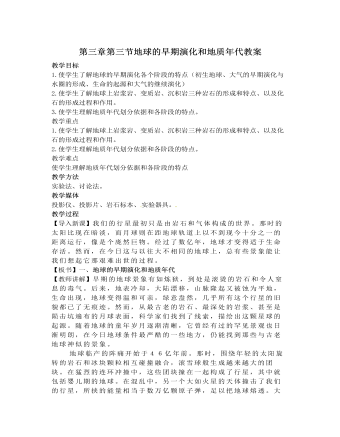
人教版高中地理选修1第三章第一节地球的早期演化和地质年代教案
地质年代可分为相对年代和绝 对年龄(或同位素年龄)两种。相对地质年代是指岩石和地层之间的相对新老关系和它们的时代顺序。地质学家和古生物学家根据地层自然形成的先后顺序,将地层分为5代12纪。即早期的太古代和元古代(元古代 在中国含有1个震旦纪),以后的古生代、中生代和新生代。古生代分为寒武纪、奥陶纪、志留纪、泥盆纪、石炭纪和二叠纪,共7个纪;中生代分为三叠纪、侏罗纪和白垩纪,共3个纪;新生代只有第三纪、第四纪两个纪。在各个不同时期的地层里,大都保存有古代动、植物的标准化石。各类动、植物化石出现的早晚是有一定顺序的,越是低等的,出现得越早,越是高等的,出现得越晚。绝对年龄是根据测出岩石中某种放射性元素及其蜕变产物的含量而计算出岩石的生成后距今的实际年 数。越是老的岩石,地层距今的年数越长。
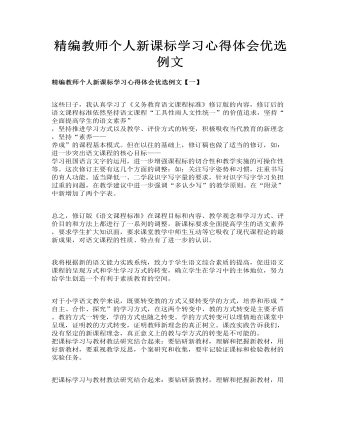
精编教师个人新课标学习心得体会优选例文
我将根据新的语文能力实践系统,致力于学生语文综合素质的提高,促进语文课程的呈现方式和学生学习方式的转变,确立学生在学习中的主体地位,努力给学生创造一个有利于素质教育的空间。 对于小学语文教学来说,既要转变教的方式又要转变学的方式,培养和形成“自主、合作、探究”的学习方式,在这两个转变中,教的方式转变是主要矛盾。教的方式一转变,学的方式也随之转变。学的方式转变可以理情地在课堂中呈现,证明教的方式转变,证明教师新理念的真正树立。课改实践告诉我们,没有坚定的新课程理念,真正意义上的教与学方式的转变是不可能的。把课标学习与教材教法研究结合起来:要钻研新教材,理解和把握新教材,用好新教材,要重视教学反思,个案研究和收集,要牢记验证课标和检验教材的实验任务。
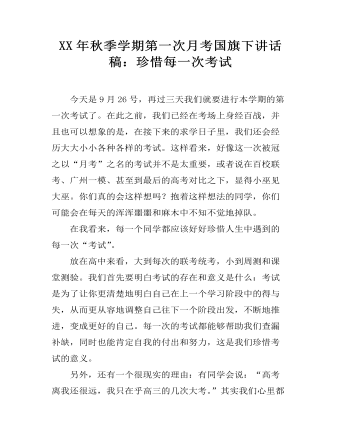
XX年秋季学期第一次月考国旗下讲话稿:珍惜每一次考试
今天是9月26号,再过三天我们就要进行本学期的第一次考试了。在此之前,我们已经在考场上身经百战,并且也可以想象的是,在接下来的求学日子里,我们还会经历大大小小各种各样的考试。这样看来,好像这一次被冠之以“月考”之名的考试并不是太重要,或者说在百校联考、广州一模、甚至到最后的高考对比之下,显得小巫见大巫。你们真的会这样想吗?抱着这样想法的同学,你们可能会在每天的浑浑噩噩和麻木中不知不觉地掉队。在我看来,每一个同学都应该好好珍惜人生中遇到的每一次“考试”。放在高中来看,大到每次的联考统考,小到周测和课堂测验。我们首先要明白考试的存在和意义是什么:考试是为了让你更清楚地明白自己在上一个学习阶段中的得与失,从而更从容地调整自己往下一个阶段出发,不断地推进,变成更好的自己。每一次的考试都能够帮助我们查漏补缺,同时也能肯定自我的付出和努力,这是我们珍惜考试的意义。另外,还有一个很现实的理由:有同学会说:“高考离我还很远,我只在乎高三的几次大考。”其实我们心里都清楚,高三的我们还会有几次考试呢?对于高中学习想要在最后的几次考试中就把自己的能力证明出来,这显然是不现实的。荀子曰:“不积跬步无以至千里,不积小流无以成江海。”
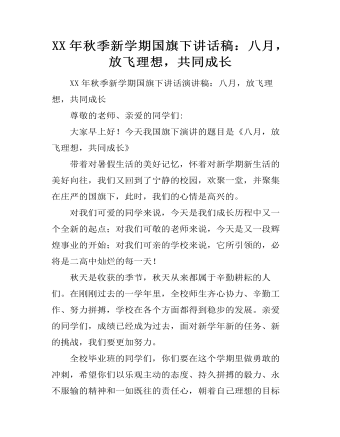
XX年秋季新学期国旗下讲话稿:八月,放飞理想,共同成长
XX年秋季新学期国旗下讲话演讲稿:八月,放飞理想,共同成长尊敬的老师、亲爱的同学们:大家早上好!今天我国旗下演讲的题目是《八月,放飞理想,共同成长》带着对暑假生活的美好记忆,怀着对新学期新生活的美好向往,我们又回到了宁静的校园,欢聚一堂,并聚集在庄严的国旗下,此时,我们的心情是高兴的。对我们可爱的同学来说,今天是我们成长历程中又一个全新的起点;对我们可敬的老师来说,今天是又一段辉煌事业的开始;对我们可亲的学校来说,它所引领的,必将是二高中灿烂的每一天!秋天是收获的季节,秋天从来都属于辛勤耕耘的人们。在刚刚过去的一学年里,全校师生齐心协力、辛勤工作、努力拼搏,学校在各个方面都得到稳步的发展。亲爱的同学们,成绩已经成为过去,面对新学年新的任务、新的挑战,我们要更加努力。
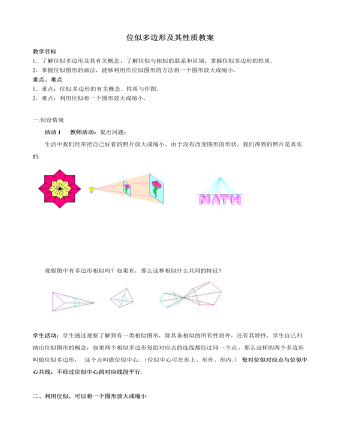
北师大初中数学九年级上册位似多边形及其性质2教案
(3)分别在射线OA,OB,OC,OD上取点A′、B′、C′、D′,使得 ;(4)顺次连接A ′B′、B′C′、C′D′、D′A′,得到所要画的四边形A′B′C′D′,如图2.问:此题目还可以 如何画出图形?作法二 :(1)在四边形ABCD外任取一点 O;(2)过点O分别作射线OA, OB, OC,OD;(3)分别在射线OA, OB, OC, OD的反向延长线上取点A′、B′、C′、D′,使得 ;(4)顺次连接A ′B′、B′ C′、C′D′、D′A′,得到所 要画的四边形A′B′C′D′,如图3. 作法三:(1)在四边形ABCD内任取一点O;(2)过点O分别作 射线OA,OB,OC,OD;(3)分别在射线OA,OB,OC,OD上取点A′、B′、C′、D′,使得 ;(4)顺次连接A′B′、B′C ′、C′D′、D′A′,得到所要画的四边形A′B′C′D′,如图4.(当点O在四边形ABCD的一条边上或在四边形ABCD的一个顶点上时,作法略——可以让学生自己完成)三、课堂练习 活动3 教材习题小结:谈谈你这节课学习的收获.
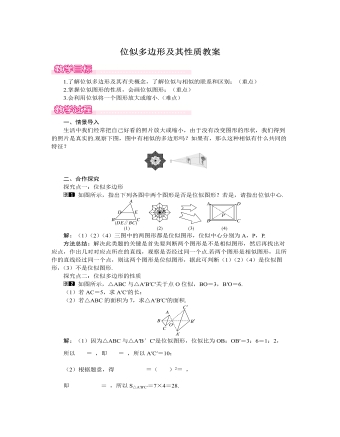
北师大初中数学九年级上册位似多边形及其性质1教案
①分别连接OA,OB,OC,OD,OE;②分别在AO,BO,CO,DO,OE上截取OA′,OB′,OC′,OD′,OE′,使OA′OA=OB′OB=OC′OC=OD′OD=OE′OE=13;③顺次连接A′B′,B′C′,C′D′,D′E′,E′A′.五边形A′B′C′D′E′就是所求作的五边形;(3)画法如下:①分别连接AO,BO,CO,DO,EO,FO并延长;②分别在AO,BO,CO,DO,EO,FO的延长线上截取OA′,OB′,OC′,OD′,OE′,OF′,使OA′OA=OB′OB=OC′OC=OD′OD=OE′OE=OF′OF=12;③顺次连接A′B′,B′C′,C′D′,D′E′,E′F′,F′A′.六边形A′B′C′D′E′F′就是所求作的六边形.方法总结:(1)画位似图形时,要注意相似比,即分清楚是已知原图与新图的相似比,还是新图与原图的相似比.(2)画位似图形的关键是画出图形中顶点的对应点.画图的方法大致有两种:一是每对对应点都在位似中心的同侧;二是每对对应点都在位似中心的两侧.(3)若没有指定位似中心的位置,则画图时位似中心的取法有多种,对画图而言,以多边形的一个顶点为位似中心时,画图最简便.三、板书设计
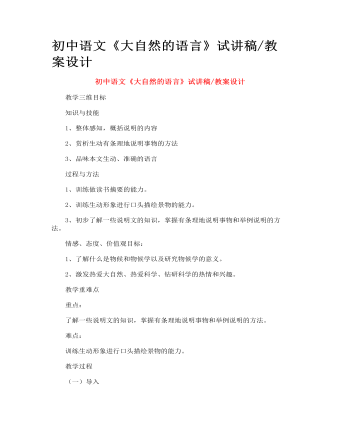
初中语文《大自然的语言》试讲稿_教案设计
竺可桢(1890--1974),浙江上虞人。气象学家、地理学家、教育家。中国近代地理学和气象学的奠基者。领导创建了我国第一个气象研究所和首批气象台站,并在台风、季风、气候变迁、农业气候、物候、自然区划等方面有开拓性的研究。创建了我国第一个地学系,成为当时培养地学英才的摇篮。以求实精神领导浙江大学工作,培育了多方面的人才。长期领导中国科学院工作,积极倡导并组织和参加中国地学、生物学、天文学、自然资源综合考察及自然科学史研究等多方面工作,主编了《中国自然区划》、《中国自然地理》等丛书,是我国地理学和气象学界的一代宗师。
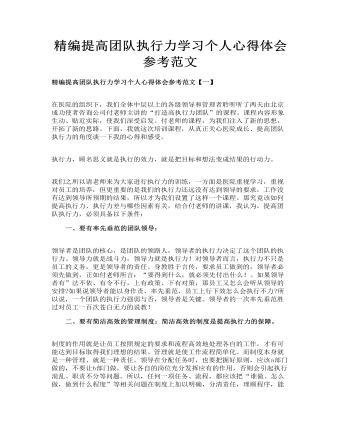
精编提高团队执行力学习个人心得体会参考范文
一、要有率先垂范的团队领导: 领导者是团队的核心,是团队的领路人,领导者的执行力决定了这个团队的执行力。领导力就是战斗力,领导力就是执行力!对领导者而言,执行力不只是员工的义务,更是领导者的责任。身教胜于言传,要求员工做到的,领导者必须先做到,正如付老师所言:“要得到什么,就必须先付出什么!。如果领导者有”法不依、有令不行,上有政策、下有对策,那员工又怎么会听从领导的安排?如果说领导者能以身作责、率先垂范,员工上行下效怎么会执行不力?所以说,一个团队的执行力强弱与否,领导者是关键。领导者的一次率先垂范胜过对员工一百次苍白无力的说教!
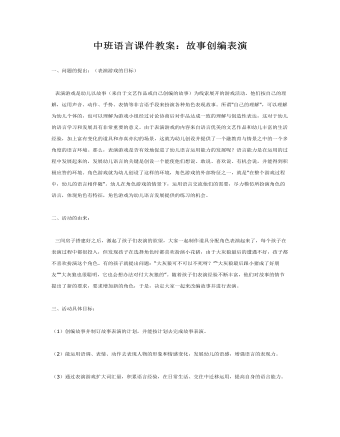
中班语言课件教案:故事创编表演
二、活动的由来: 三间房子搭建好之后,激起了孩子们表演的欲望,大家一起制作道具分配角色表演起来了,每个孩子在表演过程中都很投入,但发现孩子在选择角色时都喜欢扮演小花猪,由于大灰狼最后的遭遇不好,孩子都不喜欢扮演这个角色。有的孩子就提出问题:“大灰狼可不可以不死呀?”“大灰狼最后跟小猪成了好朋友”“大灰狼也很聪明,它也会想办法对付大灰狼的”。随着孩子们表演经验不断丰富,他们对故事的情节提出了新的要求,要求增加新的角色,于是,决定大家一起来改编故事并进行表演。三、活动具体目标:(1)创编故事并制订故事表演的计划,并能按计划去完成故事表演。(2)能运用语调、表情、动作去表现人物的形象和情感变化,发展幼儿的语感,增强语言的表现力。(3)通过表演游戏扩大词汇量,积累语言经验,在日常生活、交往中迁移运用,提高自身的语言能力。(4)培养幼儿自信、勇敢、大方的个性,能积极主动与人交谈、协商、合作与交往。

XX年春开学第四周国旗下讲话:创建绿色校园
我们大家都知道大地上站立的最大的生命群体是森林,大地上最悦目的颜色是绿色,绿色是大自然赠与我们人类的宝贵财富,绿色是人类文明的摇篮。人人都渴望拥有一个美好的家园,人人都希望生活在人与自然和谐发展的文明环境里。如今我校各方面的建设有序的进行着,我们的校园环境也正在发生全面的变化,校园环境建设是我们金源师生必须直面的问题,校园绿化程度直接作用于我们的生活环境,决定着校园生活的色彩,当然,绿色校园不只是环境绿化与垃圾处理问题,其涵义应更广更深,指一种健康向上的生活态度和生活方式,比如,严肃活泼的学术氛围,积极进取的精神风貌等。创建绿色校园,不仅只是要有优美的硬件环境,更应该提高我们自身的修养和素质,因此我们每一个金源学子都应成为护绿天使,用我们的实际行动去影响周围的人。结合学校‘三育’教育在此我提出以下几点倡议:
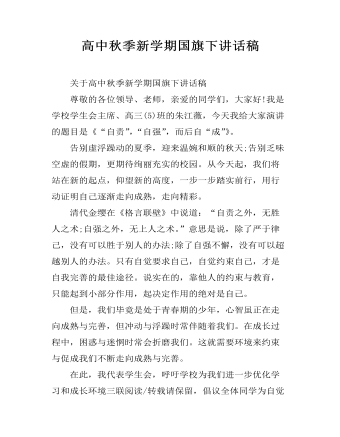
高中秋季新学期国旗下讲话稿
关于高中秋季新学期国旗下讲话稿尊敬的各位领导、老师,亲爱的同学们,大家好!我是学校学生会主席、高三(5)班的朱江薇,今天我给大家演讲的题目是《“自责”,“自强”,而后自“成”》。告别虚浮躁动的夏季,迎来温婉和顺的秋天;告别乏味空虚的假期,更期待绚丽充实的校园。从今天起,我们将站在新的起点,仰望新的高度,一步一步踏实前行,用行动证明自己逐渐走向成熟,走向精彩。清代金缨在《格言联壁》中说道:“自责之外,无胜人之术;自强之外,无上人之术。”意思是说,除了严于律己,没有可以胜于别人的办法;除了自强不懈,没有可以超越别人的办法。只有自觉要求自己,自觉约束自己,才是自我完善的最佳途径。说实在的,靠他人的约束与教育,只能起到小部分作用,起决定作用的绝对是自己。但是,我们毕竟是处于青春期的少年,心智虽正在走向成熟与完善,但冲动与浮躁时常伴随着我们。在成长过程中,困惑与迷惘时常会折磨我们。这就需要环境来约束与促成我们不断走向成熟与完善。
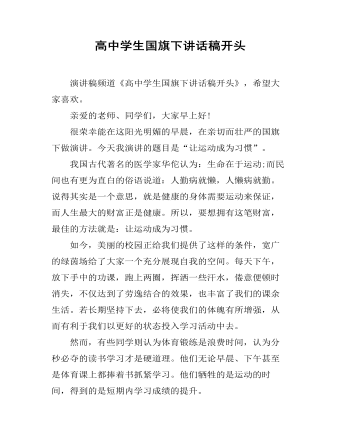
高中学生国旗下讲话稿开头
演讲稿频道《高中学生国旗下讲话稿开头》,希望大家喜欢。亲爱的老师、同学们,大家早上好!很荣幸能在这阳光明媚的早晨,在亲切而壮严的国旗下做演讲。今天我演讲的题目是“让运动成为习惯”。我国古代著名的医学家华佗认为:生命在于运动;而民间也有更为直白的俗语说道:人勤病就懒,人懒病就勤。说得其实是一个意思,就是健康的身体需要运动来保证,而人生最大的财富正是健康。所以,要想拥有这笔财富,最佳的方法就是:让运动成为习惯。如今,美丽的校园正给我们提供了这样的条件,宽广的绿茵场给了大家一个充分展现自我的空间。每天下午,放下手中的功课,跑上两圈,挥洒一些汗水,倦意便顿时消失,不仅达到了劳逸结合的效果,也丰富了我们的课余生活。若长期坚持下去,必将使我们的体魄有所增强,从而有利于我们以更好的状态投入学习活动中去。然而,有些同学则认为体育锻练是浪费时间,认为分秒必夺的读书学习才是硬道理。他们无论早晨、下午甚至是体育课上都捧着书抓紧学习。他们牺牲的是运动的时间,得到的是短期内学习成绩的提升。

